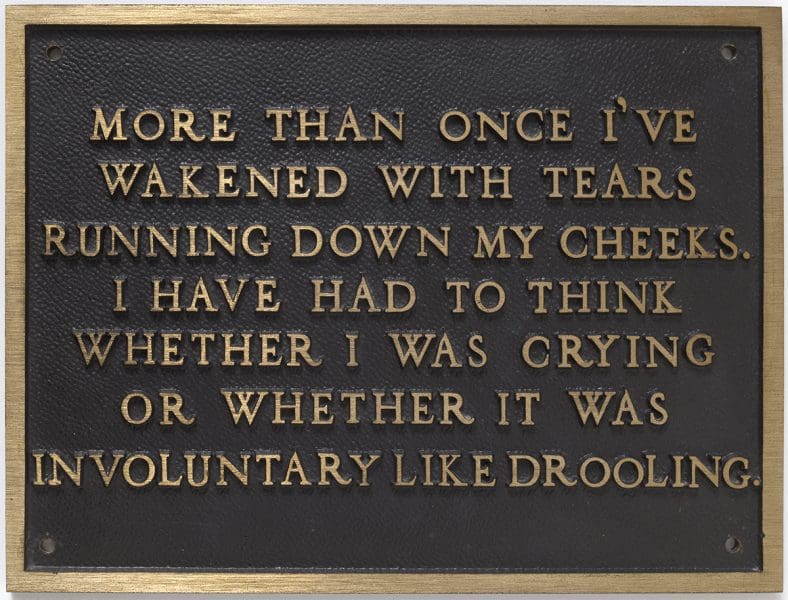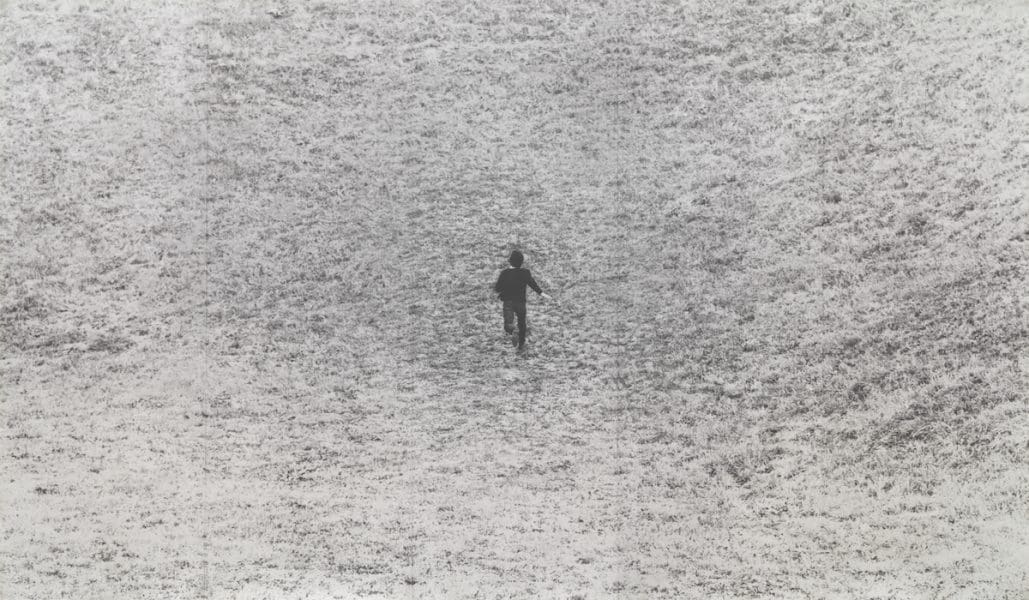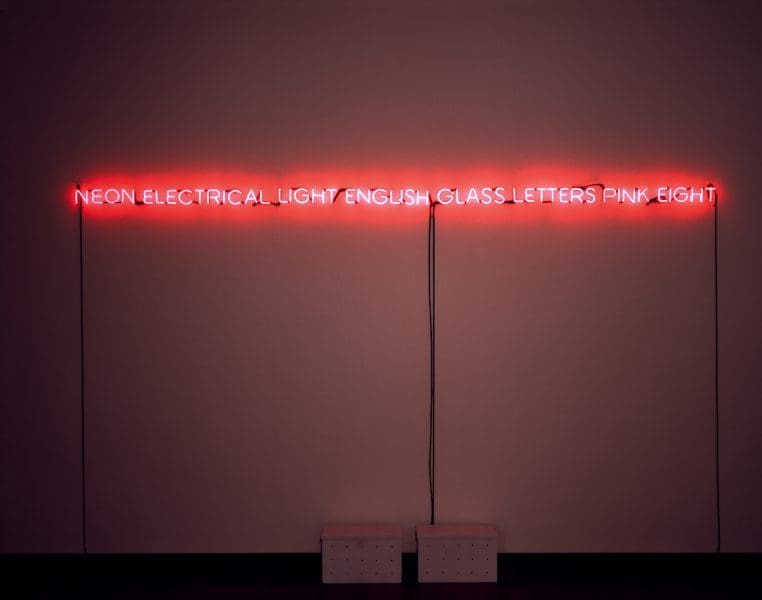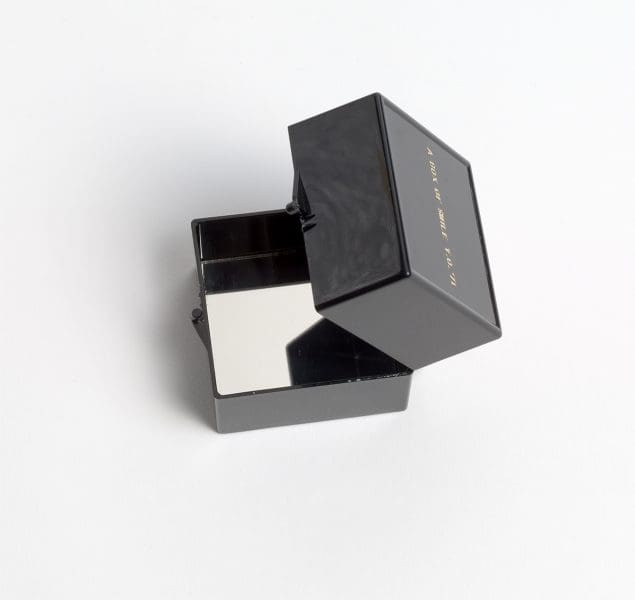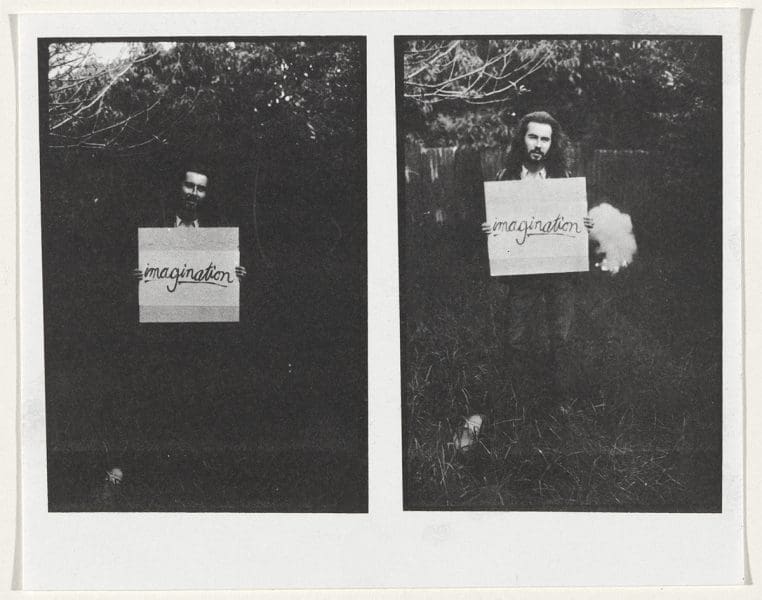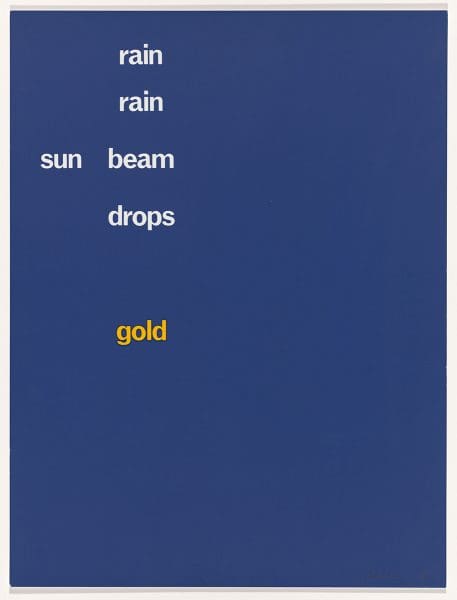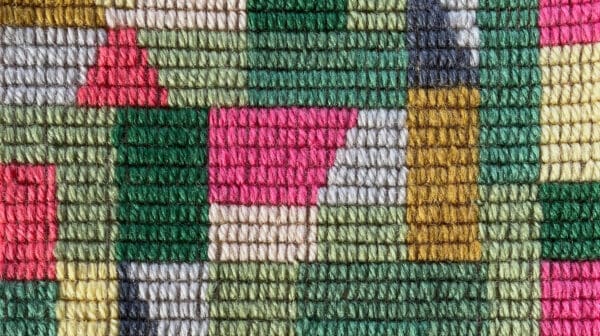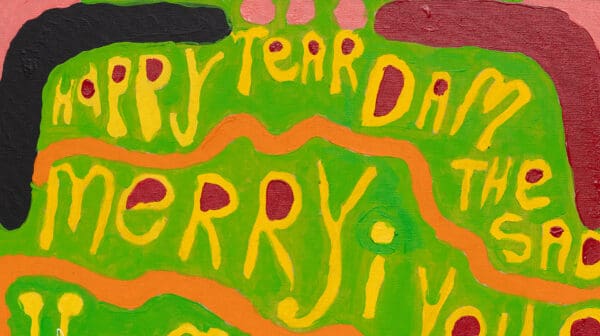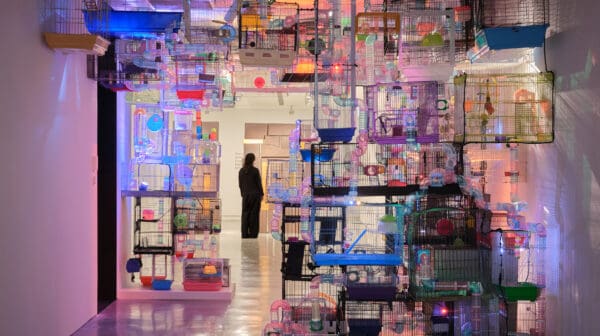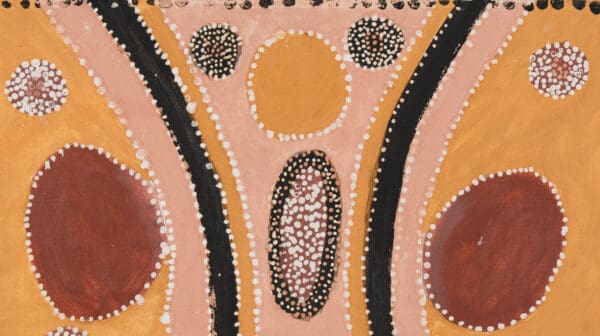A man dashes across the centre of a field in a huge silver gelatin photograph, made by Giovanni Anselmo in 1971. It measures almost five metres wide by three metres in height. You can almost fall into it: and that is the same with much conceptual art featured in the National Gallery of Australia exhibit Power + Imagination, of which Anselmo’s Entrare nell’opera [Entering the work] is a centrepiece.
Curator Elspeth Pitt says she has focused on one decade (1966-76) of the National Gallery of Australia collection, essentially exploring the way art was so deeply transformed during that period. Conceptualism had an element of mysticism about it, she says, with American art critic Lucy Lippard referring to it as a dematerialisation of the art object. “This was really a period in which art absolutely changed,” Pitt says. “It was at this time when art didn’t have to be a painting or a sculpture anymore, it could be a movement or a performance or an action or a book.”
Pitt says many of the works haven’t been on show for some time, and visitors will find surprises along the way, with names such as Sue Ford, Bonita Ely, Ian Burn and Joseph Kosuth.
She also thinks younger artists will be especially stirred seeing how disruptive this period was and the way in which the exhibition challenges some perceptions that conceptual art is too cerebral and text-heavy. Grouped loosely in terms of performance, land art, word and language works and so on, Power + Imagination also reflects the early collecting history of the NGA when James Mollison was prolifically collecting for the country. Pitt says the works as a group resonate with each other to reveal something light, experimental and an atmosphere of the instability of change.
Power + Imagination: Conceptualism 1966–1976
National Gallery of Australia
11 August – 28 January 2019
This article initially appeared in Art Guide Australia July/August 2018.



